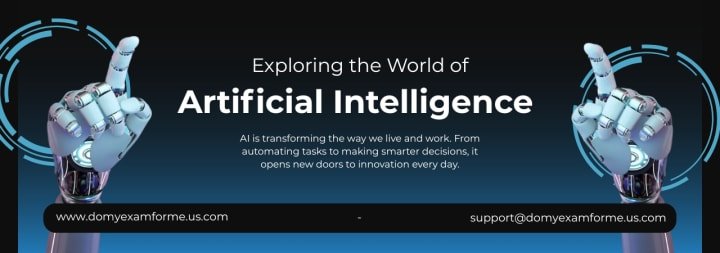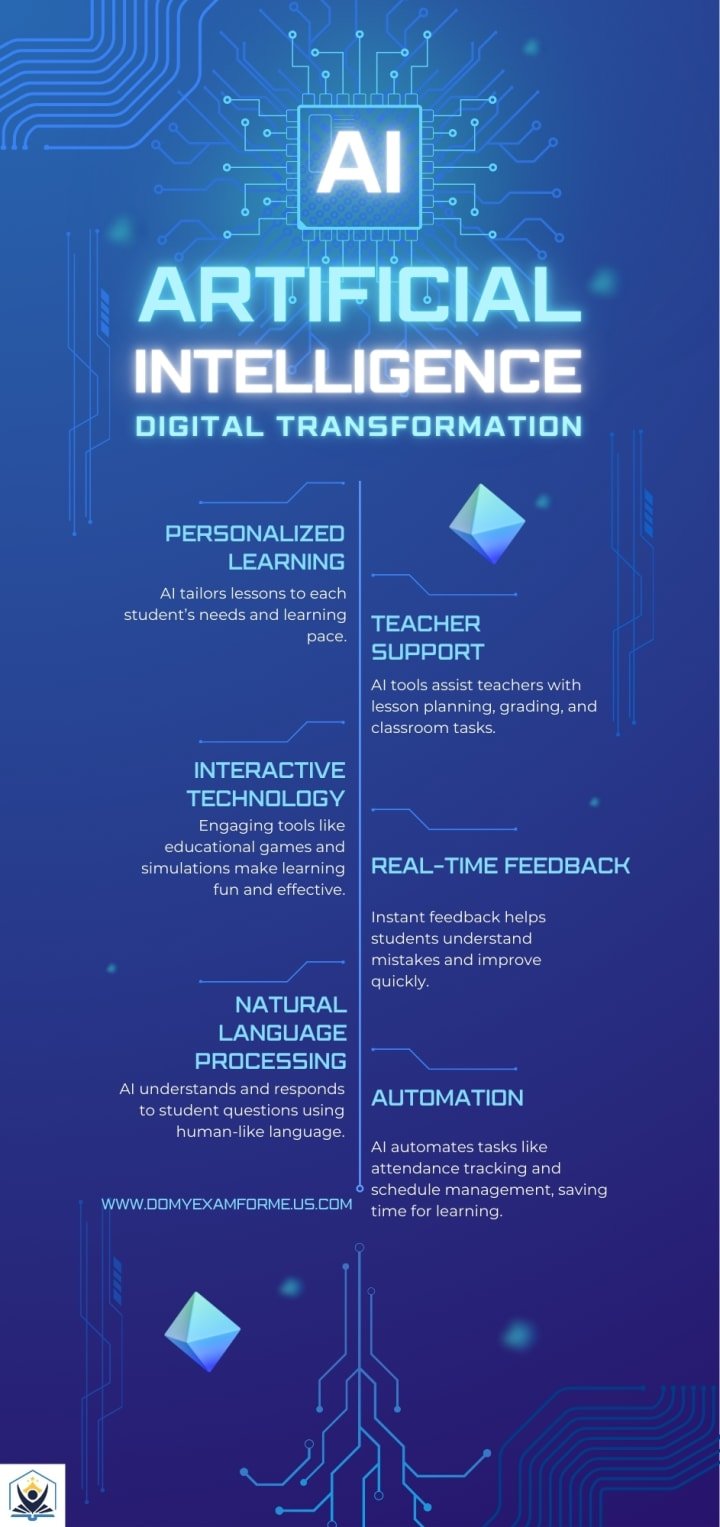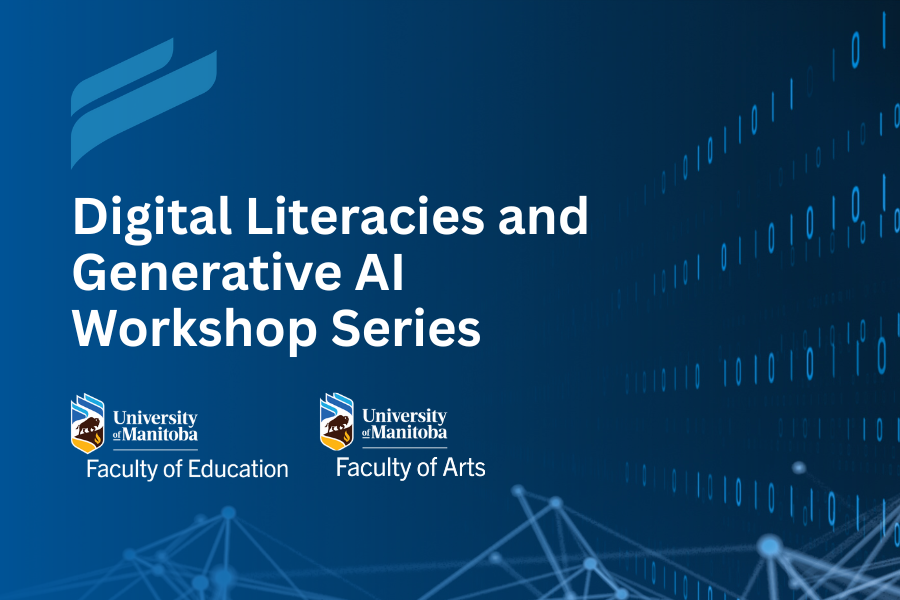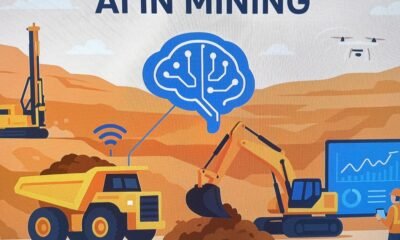Education
Smart Classrooms: The Rise of AI in K-12 Learning

Introduction
Imagine walking into your classroom, and instead of just a teacher and a whiteboard, you see smart screens, talking apps, and AI systems that actually know how you learn best. Sounds like something out of a sci-fi movie, right? But it’s real—and it’s happening right now in schools across the United States.
Smart classrooms powered by artificial intelligence (AI) are quickly becoming the new normal. They’re helping students learn in ways that are faster, more fun, and more personal. This blog dives deep into what smart classrooms are, how they work, the cool things they can do, the issues we need to think about, and where things are headed in the future.
Let’s take a journey into the classroom of tomorrow—and how it’s already changing the way young minds learn today.
What Are Smart Classrooms and Why Are They Gaining Momentum?
A smart classroom isn’t just about having a few tablets or computers in the room. It’s about combining technology and intelligence to make learning more interactive and customized. Smart classrooms use tools like AI software, smartboards, voice recognition, and learning apps to help students understand things better and faster.
These classrooms are gaining momentum because students today grow up with technology. They’re used to smartphones, video games, and voice assistants like Siri or Alexa. So, using technology to learn feels natural. Plus, schools want to help every student succeed—and AI makes it easier to give each person what they need.
The Evolution of Traditional Classrooms
From Chalkboards to Chatbots: A Quick Look Back
Not too long ago, classrooms were filled with wooden desks, chalkboards, and paper textbooks. Teachers would write everything on the board, and students copied notes into notebooks. Fast forward to today—many classrooms now have touchscreen boards, tablets, and software that can grade your tests in seconds!
Chatbots are even helping students find answers to questions when teachers are busy. These changes didn’t happen overnight. Step by step, technology became part of learning. The goal has always been the same: to make learning better, smarter, and more fun.
The Push for Innovation in K-12 Education
Schools are constantly looking for ways to improve. That’s why there’s a big push to use more technology and innovation, especially in grades K through 12. The idea is to help students learn in ways that suit them best. Some students love reading, while others learn better with videos or games. AI can adapt to each student’s needs, making learning more effective for everyone.
Understanding Smart Classrooms
Defining Smart Classrooms in the Age of AI
So, what exactly makes a classroom “smart”? A smart classroom is one where AI and other digital tools are used to personalize learning. It’s a space where technology understands your strengths and helps you work on your weaknesses. It can recommend practice questions, give instant feedback, or suggest new ways to learn a topic.
Think of it as having a personal tutor that’s available 24/7—one that remembers everything you’ve learned and what you struggle with.
Key Technologies Powering Smart Classrooms Today
Behind the scenes, smart classrooms run on some pretty amazing tech:
- Artificial Intelligence (AI): Helps personalize your lessons.
- Machine Learning: Learns from your answers to improve future quizzes.
- Smartboards: Interactive whiteboards you can write on, touch, or use for video lessons.
- Voice Assistants: Can answer questions, set reminders, or read things aloud.
- Augmented Reality (AR): Makes learning more visual—like turning a science lesson into a 3D adventure!
These tools work together to make learning exciting and customized.
The Role of AI in Modern Educational Tools
AI is like the brain behind the scenes. It helps teachers manage assignments, grades, and even class participation. It can spot when a student is struggling and suggest different ways to help. Instead of giving everyone the same lesson, AI tools can offer unique experiences based on how each student learns best.
AI doesn’t replace teachers—it helps them do their jobs even better.
Benefits of Smart Classrooms in K-12 Learning
Personalized Learning Experiences for Every Student
Everyone learns at their own pace. Some kids pick things up quickly; others need more time. Smart classrooms make sure nobody gets left behind. If you’re great at math but struggle with writing, AI can give you extra help in writing while challenging you more in math.
This way, learning isn’t one-size-fits-all. It’s just right for you.
Real-Time Feedback That Helps Students Grow Faster
Waiting a week for a test grade can feel like forever. With smart classrooms, you get feedback instantly. Whether it’s a quiz, writing assignment, or math problem, AI tools can tell you right away what you did well and what you need to work on.
That means you can fix mistakes faster and improve quicker.
How AI Supports Teachers, Not Replaces Them
Teachers are still the heart of the classroom. AI just helps take care of the boring stuff—like grading papers or tracking attendance—so teachers can focus more on helping students.
AI also gives teachers better insights. It can show which topics the whole class struggles with, so they can spend more time explaining those areas.
Increased Student Engagement Through Interactive Tech
Let’s be honest—learning from a textbook can sometimes be boring. Smart classrooms make learning interactive. You might play educational games, take part in live polls, or even explore a science lab in virtual reality.
It’s hard to be bored when the lesson feels like a game or adventure.
Reducing Administrative Burden with Automation
Teachers and school staff spend a lot of time filling out forms, making schedules, and planning lessons. Smart classrooms can automate many of those tasks. That means teachers can spend more time teaching and connecting with students.
Boosting Learning Outcomes with Data-Driven Insights
Every time you take a quiz or complete an assignment, AI tools collect data. Don’t worry—it’s not spying on you! It’s used to understand what’s working and what’s not. Teachers can use that data to make better lesson plans and help every student do their best.

Challenges and Concerns of AI in K-12 Education
Data Privacy and Security in AI-Driven Classrooms
Smart classrooms collect a lot of information. That’s why it’s super important to keep that data safe. Schools and tech companies need strong rules to protect your privacy, so your information doesn’t end up where it shouldn’t.
The Digital Divide: Unequal Access to Smart Technology
Not all schools have the same resources. Some have high-tech classrooms, while others still use old computers. This creates a gap between students who have access to smart tech and those who don’t. Closing this digital divide is one of the biggest challenges.
Over-Reliance on AI: Are We Losing the Human Touch?
AI is smart—but it doesn’t have feelings. Teachers can understand emotions, build relationships, and inspire students in ways machines can’t. If we rely too much on AI, we risk losing that important human connection.
Teacher Training and Resistance to New Tech
Not all teachers are comfortable using new technology. Some feel overwhelmed or worry they won’t do it right. That’s why schools need to provide training and support. Everyone—teachers included—should feel confident in a smart classroom.
Cost Barriers and Funding Issues for Public Schools
Smart technology can be expensive. Public schools, especially in low-income areas, may not have the money to buy the newest gadgets. To make smart classrooms fair for all, governments and communities need to invest in schools equally.
Impact on Students and Teachers
How Smart Classrooms Are Changing the Student Mindset
When students see learning as something fun and interactive, they become more curious and confident. They’re more likely to ask questions, try new things, and take charge of their own learning. Smart classrooms help build that positive mindset.
Teacher Perspectives: Stress or Support?
Some teachers feel stressed by all the new technology. But many are also excited by the possibilities. When used right, smart tools can make teaching easier and more creative. It’s all about balance and proper training.
Adapting Teaching Methods to AI Integration
Teaching isn’t just about standing in front of the class and talking anymore. With smart classrooms, teachers use videos, quizzes, games, and group projects. They also use AI tools to check progress and adjust lessons. It’s a new way of teaching—and learning.
Case Studies and Real-World Examples
Successful Implementation of AI in K-12 Schools
Schools in California and New York are already using AI-powered tools to help students learn languages, improve math scores, and even get emotional support through AI chatbots. These success stories show what’s possible when technology and teaching come together.
Lessons Learned from Early Adopters
The schools that started using AI early have learned a lot. They’ve seen how important it is to include teachers, students, and parents in the process. They’ve also learned that tech works best when it’s used to support not replace traditional teaching.
The Future of Smart Classrooms
Emerging AI Trends in Education to Watch
Here’s what’s coming next:
- AI tutors that talk like real people
- Learning programs that adjust every day to your progress
- Virtual classrooms where students from around the world learn together
The future is not just exciting—it’s already on its way.
What Classrooms Might Look Like in the Next 10 Years
In ten years, classrooms may look like science labs or gaming studios. Students might use AR glasses, learn from AI mentors, and create projects in 3D environments. School will be more flexible, creative, and connected to real-world skills.
How Policymakers Are Shaping the Future of AI in Schools
Lawmakers and education leaders are now writing the rules for AI in schools. They’re making sure it’s used safely, fairly, and effectively. This means setting limits, protecting privacy, and making sure all students benefit equally.
Ethical Considerations and Safeguards
Balancing Innovation with Responsibility
Just because we can use AI doesn’t mean we always should. Schools need to think carefully about when and how to use smart tools. The goal is to help—not to control.
Creating Ethical Guidelines for AI in Classrooms
Experts are working on ethical rules for AI in schools. These include protecting student privacy, preventing bias, and making sure AI is used to support—not harm—young learners.
Parental and Community Involvement
Helping Parents Understand Smart Classroom Technology
Parents need to know what’s happening in their child’s classroom. Schools should offer workshops, videos, or newsletters to explain how smart technology works—and how it helps students succeed.
Building Trust and Transparency Around AI in Schools
The more people understand AI, the more they trust it. Schools should be open about how they use AI and what data they collect. That builds confidence and community support.
Conclusion
Smart classrooms are changing the way we learn—and for the better. They make lessons more exciting, help students grow faster, and give teachers the tools to do amazing things. But it’s also important to be careful and thoughtful. We must make sure all students have access to these tools, that teachers get support, and that families stay informed.
And remember, no piece of technology can replace hard work, curiosity, and a love for learning. AI can guide you, support you, and even say, “Do my Exam For Me,” but real success still comes from within.
The classroom of tomorrow is already here. The question is—are we ready for it?
Education
ATEC to provide long-term stewardship and shape international education growth

The Australian Tertiary Education Commission (ATEC), created in response to last year’s Australian Universities Accord, has begun interim operations and will act as an independent steward for the system, overseeing implementation of reforms aimed at lifting participation, improving equity, and strengthening links between vocational and higher education.
Addressing an audience gathered at the Australian Student Equity Symposium in Sydney, Australia’s education minister Jason Clare said ATEC will ensure long-term reform of the sector and prevent policy momentum from being lost to shifting political cycles.
Clare said reform agendas often lose focus when governments or ministers change. “Almost always, when a big piece of thinking is done to reform or transform a part of the economy, governments will pick off parts of it and then the caravan moves on,” he said.
“I want to make sure that’s not the case here,” he said, reinforcing that ATEC will provide continuous oversight, keeping governments focused on both the unfinished business of the Accord and emerging sector challenges.
While the Accord laid the foundations, Clare stressed it cannot answer every question for the future. “The Accord is a product of a big piece of work in 2023 and it doesn’t necessarily have all the answers for 2030 or 2035,” he said. “This gives us a living process to constantly provide feedback… not just what haven’t we done in the Accord that we need to do, but what else should we be thinking of doing.”
ATEC will negotiate compacts with universities covering funding, purpose, and institutional mission. “At the nitty gritty level, it’s about money, but it’s also about purpose and focus,” said Clare.
“In the future, we do have an ecosystem which looks different than it does today, not worse, better, but different and potentially a little bit more specialised.”
ATEC will also play a central role in Australia’s international education sector, according to assistant minister for international education Julian Hill.
Speaking at the Education Consultants Association of Australia, Hill said the Commission will oversee mission-based compacts requiring institutions to outline their own strategies for international enrolments, rather than imposing one-size-fits-all caps.
Institutions will need to show how they are diversifying, how they’re contributing to national priorities, and how their growth is sustainable
Jason Clare, education minister
“Institutions will need to show how they are diversifying, how they’re contributing to national priorities, and how their growth is sustainable,” said Hill.
The Commission will monitor reliance on specific markets, regional provision, student housing, and overall sustainability, ensuring international growth aligns with broader national objectives.
ATEC is currently operating in an interim capacity and, subject to the passage of legislation, is expected to be fully operational by 2026. The Commission is designed to support a more coordinated and sustainable higher education system, ensuring that reforms progress steadily and that institutions balance domestic and international priorities in line with national policy objectives.
Education
UM Today | Faculty of Education

September 11, 2025 —
The Digital Literacies Lab in the Faculty of Education, in collaboration with the Media Lab in the Faculty of Arts at the University of Manitoba, presents a hybrid speaker series (in-person and online) that will explore the potential and ethical challenges of generative artificial intelligence technologies in education, and the role of digital literacies in this context.
Through engaging talks and workshop-style discussions, this series aims to foster critical dialogue, inspire innovation, and support educators, researchers, and students in navigating the evolving role of AI in teaching, learning, and educational policy. Join us as we delve into opportunities and complexities of artificial intelligence and the role of digital literacies in education and beyond.
Join in-person viewing in the Digital Literacies Lab (RM 328, Education Building) or the Faculty of Arts Media Lab (233 University College) with post-workshop discussions.
All workshops will be streamed on Zoom, with three of the four presenters joining online. Complete event information for each workshop and registration for online viewing can be found here.
Workshops include:
Sept 23 (6:00pm – 7:30pm) – “Generative AI: Implications and Applications for Education” with Bill Cope & Mary Kalantzis
Oct 21 (6:00pm – 7:30pm) – “The End of the World as We Know It? AI, Post-Literate Society and Education” with Allan Luke
November 25 (6:00pm – 7:30pm) – “Assessment Literacy in the Age of AI” with Michael Holden (in person presentation at 328 Education building)
Dec 2 (6:00pm – 7:30pm) – “Digital Literacies as Literacies of Repair” with Rodney H. Jones
Education
$53B Market Growth by 2030 Amid Benefits and Risks

In the rapidly evolving realm of education technology, artificial intelligence is reshaping how students absorb and retain knowledge, prompting educators and researchers to scrutinize its long-term effects. Recent studies highlight both transformative potential and subtle pitfalls, as AI tools like chatbots and personalized learning platforms become classroom staples. For instance, a Boise State University professor, Jenni Stone, recently explored these dynamics in an article for The Conversation, emphasizing how AI might inadvertently hinder deep learning by providing quick answers that bypass critical thinking.
Stone’s analysis draws on empirical data showing that while AI excels at delivering customized content, it can reduce students’ engagement with complex problem-solving. Her work, published amid a surge of 2025 research, aligns with findings from a Microsoft Education Blog report, which surveyed educators and found that 68% believe AI enhances teaching efficiency but warns of overreliance eroding foundational skills.
Personalized Learning’s Double-Edged Sword
This tension is evident in global trends, where AI-driven adaptive systems tailor lessons to individual paces, potentially boosting outcomes for diverse learners. A study in the journal Education Sciences, conducted at Romania’s National University of Science and Technology POLITEHNICA Bucharest, polled 85 students and revealed that 72% reported improved academic performance through AI tools, yet 45% expressed concerns about diminished critical analysis abilities. The research underscores AI’s role in democratizing education, particularly in underserved regions, by offering real-time feedback that human teachers might not scale.
However, the Bucharest study also flags ethical dilemmas, such as data privacy and algorithmic biases that could exacerbate inequalities. Echoing this, a World Economic Forum piece from 2024, updated with 2025 insights, argues that AI in “Education 4.0” promotes equity by preparing students for AI-integrated workplaces, but only if implementations prioritize human oversight.
Market Growth and Institutional Shifts
The economic impetus is undeniable, with market projections painting a bullish picture. According to a Maximize Market Research report featured on OpenPR, the global AI in education sector is poised to balloon from $4.17 billion in 2023 to $53.02 billion by 2030, driven by tools automating administrative tasks and fostering interactive learning. This growth is fueled by investments in smart tutoring systems, as noted in Netguru’s blog on AI’s educational impact, which details how such technologies are streamlining everything from grading to curriculum design.
Yet, institutional adoption varies widely. A UNESCO report from early 2025, discussed during their Digital Learning Week, convened global leaders to address AI’s inclusive potential, stressing the need for policies that ensure human-centered futures. The report warns that without ethical frameworks, AI could widen digital divides, a sentiment mirrored in student perspectives from EDUCAUSE Review, where firsthand accounts with tools like ChatGPT reveal enhanced creativity but limited depth in understanding.
Educators’ Evolving Roles
Teachers are at the forefront of this shift, transitioning from lecturers to facilitators in AI-augmented environments. Insights from THE Journal’s 2025 predictions highlight experts forecasting AI’s dominance in personalized tutoring, potentially reducing teacher workloads by 30% while demanding new skills in AI literacy. Posts on X, formerly Twitter, reflect public sentiment, with users like tech influencers noting AI’s inevitability in education, comparing it to calculators’ integration and urging curricula to evolve rather than resist.
A ScienceDirect systematic review from 2024, extending into 2025 analyses, synthesizes over 100 studies showing AI’s prowess in tracking progress but cautions against replacing human interaction. This is particularly relevant in higher education, where AI aids in identifying at-risk students early, as per the U.S. Department of Education’s AI report.
Challenges in Skill Development
Deeper concerns emerge around cognitive impacts. Stone’s Conversation piece delves into experiments where AI-assisted groups showed short-term gains in creativity but struggled with original ideation without prompts, suggesting a “crutch effect.” Complementing this, a GPA Calculate Tools analysis on generative AI usage indicates that in 2025, 75% of students employ these tools, correlating with higher grades yet lower retention of core concepts.
International examples amplify these findings. China’s nationwide integration of AI into curricula, as reported on X by figures like Mario Nawfal, aims to build a tech-savvy workforce, embedding AI from primary levels to universities. However, critics argue this could prioritize rote efficiency over innovative thinking.
Future Directions and Policy Imperatives
Looking ahead, balancing AI’s benefits with safeguards is crucial. The UNESCO-convened discussions in 2025 advocate for global standards, emphasizing teacher training and equitable access. A student’s viewpoint in EDUCAUSE Review questions if systems can keep pace, proposing AI as a collaborator rather than a replacement.
Ultimately, as AI permeates education, ongoing research like that from Boise State and international bodies will guide its trajectory. By fostering thoughtful integration, stakeholders can harness AI to elevate learning without compromising the human elements that define true education.
-

 Business2 weeks ago
Business2 weeks agoThe Guardian view on Trump and the Fed: independence is no substitute for accountability | Editorial
-
Tools & Platforms1 month ago
Building Trust in Military AI Starts with Opening the Black Box – War on the Rocks
-

 Ethics & Policy2 months ago
Ethics & Policy2 months agoSDAIA Supports Saudi Arabia’s Leadership in Shaping Global AI Ethics, Policy, and Research – وكالة الأنباء السعودية
-

 Events & Conferences4 months ago
Events & Conferences4 months agoJourney to 1000 models: Scaling Instagram’s recommendation system
-

 Jobs & Careers2 months ago
Jobs & Careers2 months agoMumbai-based Perplexity Alternative Has 60k+ Users Without Funding
-

 Podcasts & Talks2 months ago
Podcasts & Talks2 months agoHappy 4th of July! 🎆 Made with Veo 3 in Gemini
-

 Education2 months ago
Education2 months agoMacron says UK and France have duty to tackle illegal migration ‘with humanity, solidarity and firmness’ – UK politics live | Politics
-

 Education2 months ago
Education2 months agoVEX Robotics launches AI-powered classroom robotics system
-

 Funding & Business2 months ago
Funding & Business2 months agoKayak and Expedia race to build AI travel agents that turn social posts into itineraries
-

 Podcasts & Talks2 months ago
Podcasts & Talks2 months agoOpenAI 🤝 @teamganassi





















